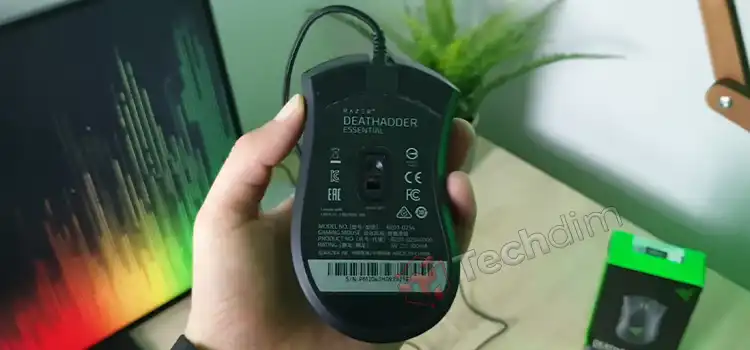Why Does My Motherboard Have an HDMI Port [Explained]
If the dedicated graphics card on your PC already has video connectivity ports including HDMI, then why do motherboards have an HDMI port?
This question is normal to ask as a PC user and the answer is fairly simple too. Many budget and non-gaming PCs lack dedicated graphics cards. In this case, the monitor gets connected to the HDMI port of the motherboard.
More questions might come to your mind regarding this topic. I’m going to explain more about why motherboards have an HDMI port and will also discuss some very important cautions. So, without any further ado, let’s read it up.

Why There Is an HDMI Port on Your Motherboard?
In simple terms, an HDMI port on a motherboard is for budget PC users who don’t use a dedicated graphics card. Here are the advantages of having an HDMI port on your motherboard:
1. It At Least Makes Your PC Usable
HDMI is the best and most common connection type for transmitting video and audio to the monitor. To render video and images on your monitor, you need to connect it to the graphics card.
But what if your computer doesn’t have any dedicated graphics card? Where do you connect your monitor then?
To solve this problem, motherboards contain an HDMI port to connect your monitor to the integrated graphics unit of the CPU to make the monitor capable of rendering video and images.
2. You Don’t Necessarily Need a Dedicated Graphics Card
Though it completely depends on the intent that you want to do with your PC to know whether you need a dedicated GPU or not, you don’t necessarily need a dedicated graphics card if you already have an integrated graphics card on your motherboard with an HDMI port.

The fact is, if you are using your PC for not tasks that don’t require high graphics, then you can use the integrated graphics from the HDMI port on your motherboard. But, if your PC is intended for tasks like gaming, rendering 3D graphics, etc. you are recommended to you’re a dedicated graphics card.
On the contrary, if your CPU neither has an integrated graphics card, nor any dedicated GPUs, then you can’t use the HDMI port on your motherboard. You either need a CPU with an integrated graphics card or a dedicated graphics card to run your PC.
3. It Helps You Connecting Multiple Monitors to Your PC
Many PC users connect multiple monitors to their PC. Especially, if you are working with video editing, graphics designing, or playing 3D games, you may feel the urge of using multiple monitors. If you want to connect multiple monitors on your PC, you’ll need multiple HDMI ports.
Though the dedicated graphics cards come with more than one HDMI port, you may still need one more HDMI port to connect another monitor to your PC. In that case, you can connect the final monitor to the HDMI port of your motherboard.
Needless to say, the integrated graphics card gets disabled while the dedicated graphics card is enabled in most cases. That means you can’t use your motherboard’s HDMI port while using the dedicated GPU’s HDMI port.
But fortunately, you can enable both the motherboard and dedicated GPU’s HDMI port at a time from your BIOS. Here is an instructional video on how you can connect one monitor to your motherboard while the other is on the dedicated GPU:
I have written a comprehensive topic on – One Monitor in Graphics Card Other in Motherboard | Can I Plug it in?
Pro-Tip: Can You Use Motherboard HDMI Without Integrated Graphics?
If your PC lacks a dedicated graphics card, then you can use the HDMI port on your motherboard to connect the integrated graphics card of the CPU to the monitor. But if your CPU doesn’t have any integrated graphics, then the HDMI port of your motherboard won’t work anymore. In that case, you must have to get a dedicated GPU to connect your monitor.
The graphics processing unit processes and renders video and images on the display. Without the GPU, only a CPU can’t process the video. So, you must need at least a CPU with iGPU to make the HDMI port of your motherboard work in this case.
You can also check our other article regarding this topic on – HDMI to Graphics Card or Motherboard | Where to Connect?
Frequently Asked Questions (FAQs)
Does Every Motherboard Have an HDMI Port?
No, every motherboard doesn’t have an HDMI port. Only motherboards intended to be used with a CPU that has an integrated graphics card has an HDMI port.
Which Is Better – HDMI on the Motherboard or HDMI on Graphics Card?
If you have both the integrated graphics card and a dedicated GPU, then obviously use the dedicated GPU. This is because dedicated graphics cards are much more powerful than integrated graphics cards and you can get the best performance from your dedicated graphics card rather than the integrated graphics card.
Conclusion
Simply, the HDMI port on your motherboard gives the user the opportunity to use the computer without a dedicated graphics card. All the information related to the HDMI port on the motherboard have given in this article and we hope now you’ve understood why your motherboard has an HDMI port after reading it. If you have any other questions regarding this topic, don’t hesitate to ask in our comment section below. Thanks for reading.
Subscribe to our newsletter
& plug into
the world of technology





